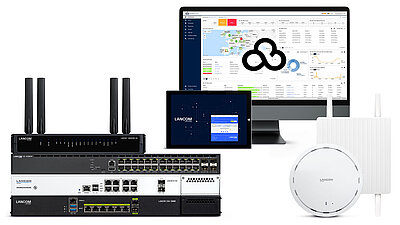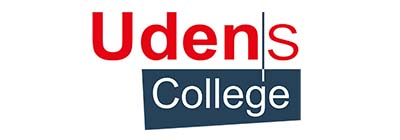Implementing future-proof school Wi-Fi at adequate effort
Do you know such or similar statements? "The Wi-Fi at home works much better than the one at school." "Our school Wi-Fi is so slow." "Our teachers don't get along with the Wi-Fi." Or worst case scenario: "Bypassing the school firewall is super easy." The best prevention against such experience reports is a well-planned and powerful school network and Wi-Fi.
LANCOM is specialist in digital equipment for schools and offers experienced support for the digitilization of schools and other educational institutions with a fully comprehensive school network package that is fast, secure, and GDPR-compliant. For a school Wi-Fi that will be free from statements as above.
Digital equipment in schools as the basis for modern learning
Wi-Fi in schools is fundamentally important for equal opportunities in education. A modern school network takes all needs and user groups into account – in the simplest possible way and as granular as required.
Secure access, reliable data transmission, and simple operation of the systems are essential for digitilization projects – especially in educational institutions. These requirements apply equally to a school with 50 students and a campus with 5,000 learners. In addition, there are school-specific issues such as special building characteristics, daily processes, and a high level of responsibility for the children and young people.
Udens College: "The biggest advantage is the scalability and flexibility of Whyless and LANCOM. For example, we can now limit the signal strength for each access point. [...] In the latest firmware update, LANCOM has added the option to block multicast traffic. It is always a positive experience when your supplier listens to your needs."
Joey Aben, network administrator of Udens College

A Wi-Fi tailored to everyday school life supports all typical usage scenarios – individual research, video conferencing, collaboration and communication via learning platforms, and applications such as class books and digital timetables. 30 uploads at the same time are commonplace – people often underestimate the amount of data a school network has to cope with.

Teachers and students use a wide variety of stationary and mobile devices. Ideally, they are allowed to access the school network with the school's tablets, but also with private notebooks or smartphones (BYOD: bring your own device). In addition, there are wired or Wi-Fi-capable work devices: whiteboards or digital boards, projectors, printers, and servers.

High-speed Internet is needed for all these scenarios, user groups, and devices. Hybrid learning that is flexible in terms of time and location, as well as modern teaching methods can only be implemented with a secure, fast, stable, and interference-free wireless LAN and LAN in all classrooms and function rooms. This can only be guaranteed with a sufficiently dimensioned Internet line and a powerful gateway at the school site.

In the school sector, "secure" means above all "compliant with youth protection and data privacy". Children's and young people's personal data, from family constellations to certificates and grades, are absolutely worth protecting. Content that is harmful to minors, on the other hand, has to be excluded from the school network.
Wi-Fi in schools: Knowing the topics relevant to the audit
- Keep administrative effort for school network and Wi-Fi low: simple operation, user-friendly interface, clear user management (e.g. adding additional students with appropriate access rights), different connections in all rooms for flexible selection of appropriate digital teaching aids
- Take into account users, devices, apps, and the network itself in your IT security concept and ensure the highest level of cyber and data protection
- Build a future-proof WLAN and IT network: plan for increasing data rates and new Wi-Fi standards such as Wi-Fi 6E, consider technical and social developments (new digital devices and apps), enable growth through scalable IT infrastructure

Getting ready for the lesson: Build the school network
As a first step in equipping or modernizing the school network, it is advisable to survey the initial situation and conduct a demand analysis:
- Which user groups exist, which applications do they use or will they use?
- What are the reasons for and types of access?
- How many users access the school Wi-Fi at the same time? And from where?
- Which functions are needed particularly frequently? (Example: "Wi-Fi off")
- What duties and tasks must be fulfilled: Data and youth protection, duty of care, provision, administration?
- And what security requirements result from this?


Legal
Data and youth protection: planning the school network in compliance with the law
- Separation of networks: sensitive personal data (grades, contact data, letters, etc.) vs. non-critical educational data
- Access control and firewall for protection against data theft and manipulation
- Content filter for checking data packets from the Internet

Technical
Security and duty of care: Provision of a fit-for-purpose network infrastructure
- Hardware components: routers / gateways, firewalls, switches, access points
- Access control: authorized groups and individuals, internal and external applications, protection against cyber attacks
- Cloud-based network management
A well-functioning school Wi-Fi is based on a professional network infrastructure in the background. We distinguish between three dimensions:
- Primary area: primary cabling (cross-building campus network; typical: fiber optic cable)
- Secondary area: Secondary cabling (backbone cabling within a building; fiber optics, currently typical transmission rate 10 Gbps)
- Tertiary area: tertiary cabling (workplace cabling; twisted-pair copper cabling, at least Cat5e, better Cat7)
For a reliable high-speed internet connection and maximum IT security, a gateway or router (DSL or fiber optic) with a dedicated firewall is also required.
The digital equipment for schools offered by LANCOM is innovative, secure, and future-proof. It comprises an overall portfolio of gateways / routers, switches, next-generation UTM firewalls, WLAN access points, ePaper room signage, and cloud management. More than 3,000 school networks throughout Germany have already modernized and optimized their school Wi-Fi with LANCOM.
LANCOM IT networks are precisely tailored to the high demands of school networks: DSGVO-compliant, backdoor-free, "engineered in Germany," and with content filter and BPjM filter for reliable protection of minors. As a member of the "Bündnis für Bildung" (Alliance for education), LANCOM is a reliable partner at the side of schools and other educational institutions.

Well informed in the direction of digital school
The education of children and young people sets a decisive social course. The concern to provide the best possible teaching and learning conditions cannot be prioritized highly enough. Functioning IT networks and Wi-Fi at schools are one of the building blocks for this. LANCOM has a wealth of experience in this area.

Thomas Wenderoth
VP Business & Market Development
thomas.wenderoth@lancom.de
Tel.: +49 2405 49936 258
Mobil: +49 151 17487525








